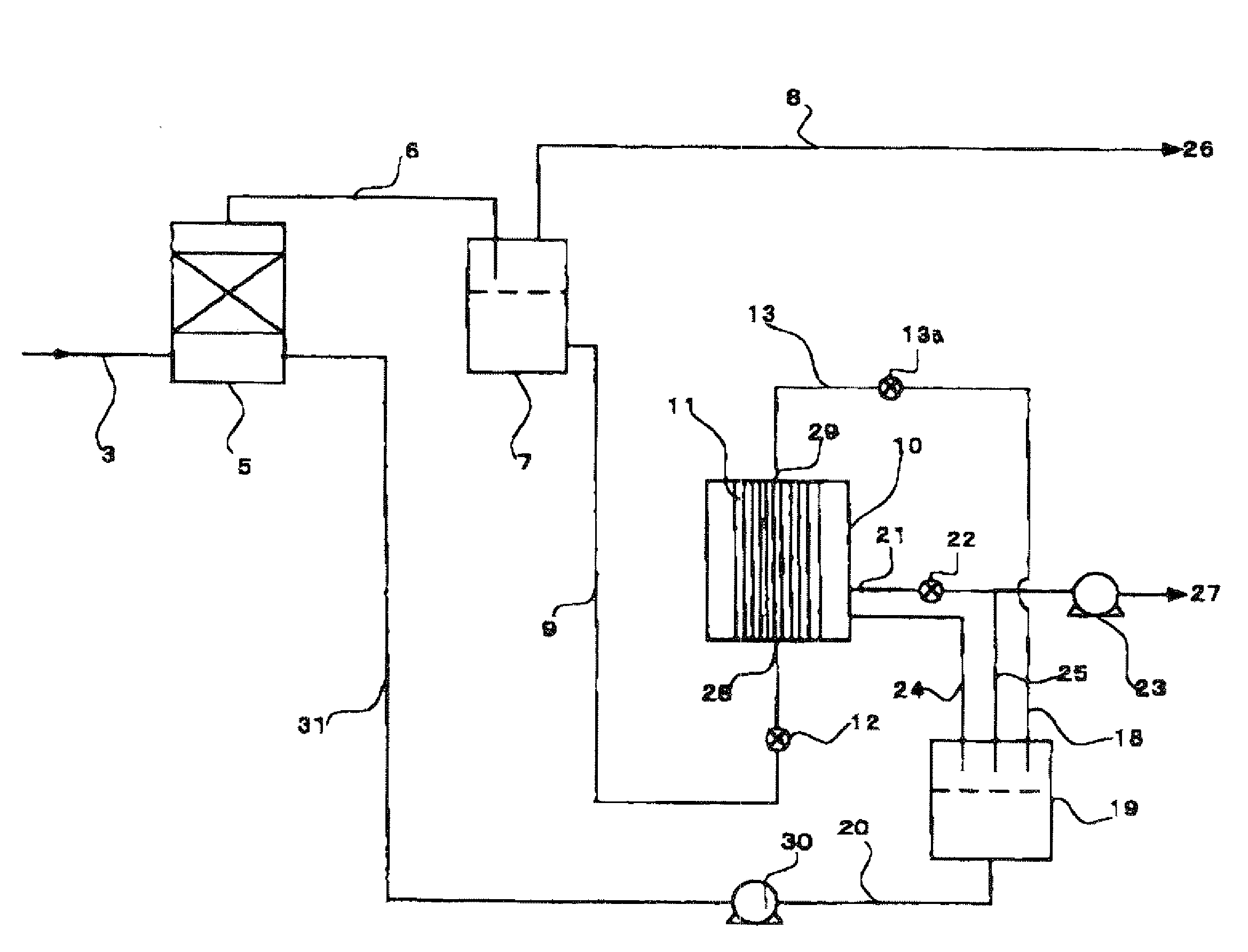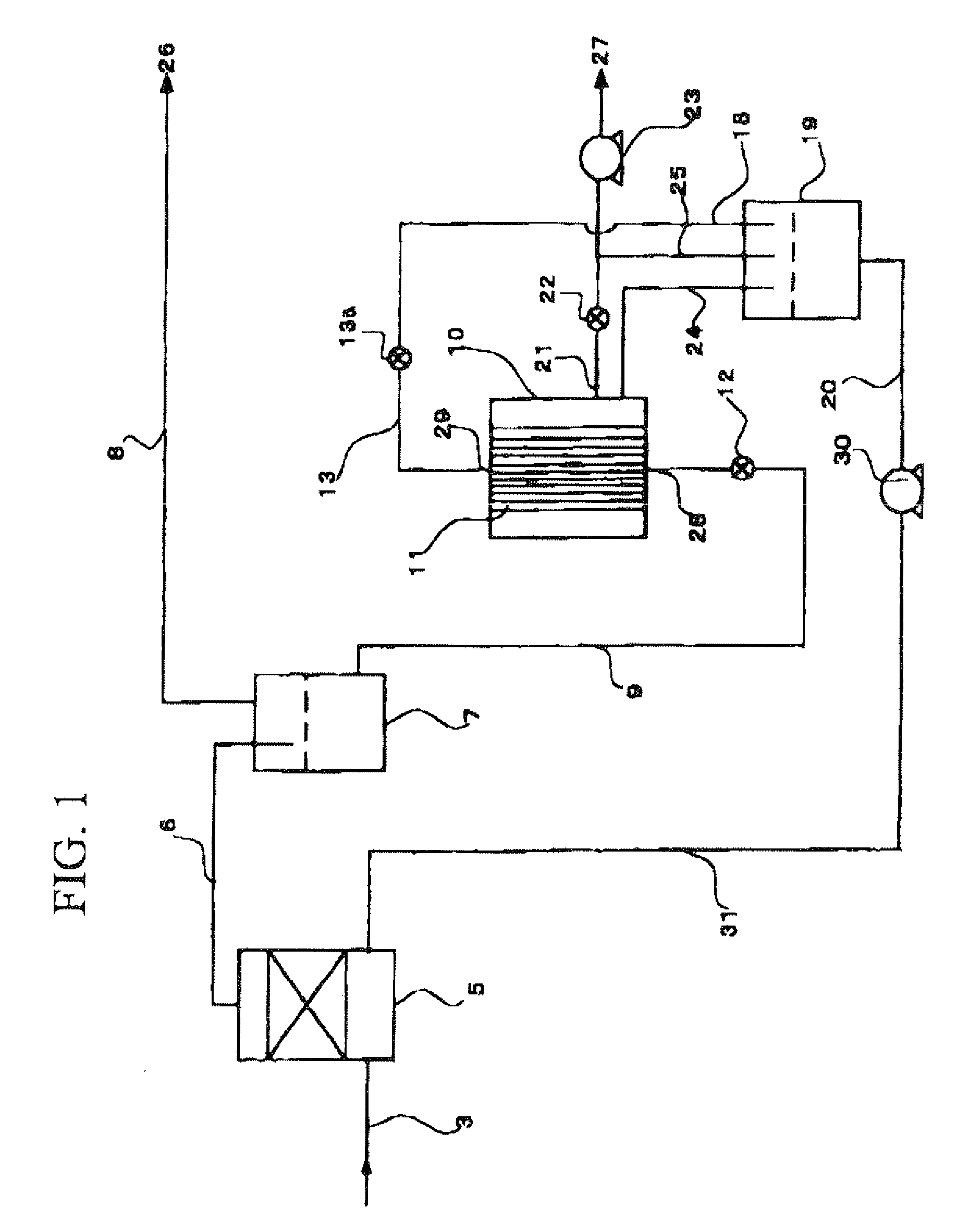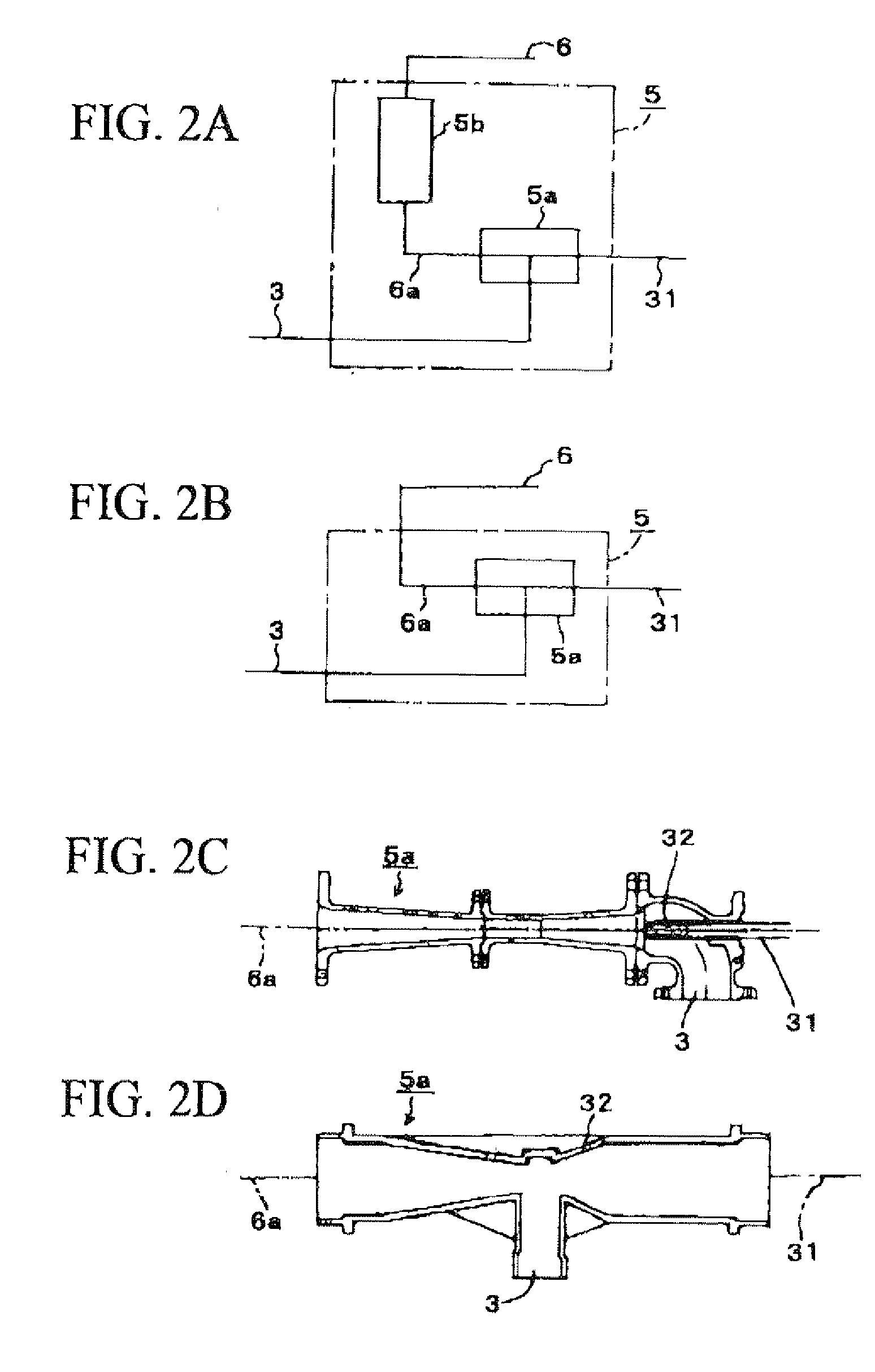Methane separation method, methane separation apparatus, and methane utilization system
- Summary
- Abstract
- Description
- Claims
- Application Information
AI Technical Summary
Benefits of technology
Problems solved by technology
Method used
Image
Examples
example 1
[0095]In Example 1, comparison test of the concentration of methane concentrated by mixers of 3 different kinds of absorption systems was carried out by using the methane separation apparatus of a one stage separation system shown in FIG. 1.
[0096]FIG. 5 is a comparison chart of concentrations of the concentrated methane obtained by conducting methane separation from the absorbing liquid that absorbed carbon dioxide using mixers of 3 different absorption systems. The longitudinal axis indicates the concentration of concentrated CH4 (%) that is separated. The transverse axis indicates the required membrane area (m2 / (N1 / min)), which is the surface area of a permeable membrane per unit flow rate of a biogas to be treated. More specifically, the required membrane area is defined by the following equation: Required membrane area=(surface area of permeable membrane installed in membrane module)[m2] / (biogas treatment flow rate)[N1 / min], and the lower value of required membrane area means hi...
examples 2 to 5
[0100]In Examples 2 to 5, separation and purification of methane were carried out using the methane separation apparatus of a one stage separation system shown in FIG. 1.
[0101]Tables 1 to 4 show details of the respective conditions, in which Examples 2 to 5 were conducted.
TABLE 1Biogas treatment flow rateNl / min0.67Degree of vacuumkPaG−90.2CH4 concentration%98.4DEA temperature° C.29CH4 recovery rate%99.5Membrane aream20.062Required membrane aream2 / (Nl / min)0.09Flow rate of permeatingL / m2 · min40.6liquid per membrane areaGas / liquid ratio (Nl / L)0.27Absorbing liquid3 mol / l-DEAHollow fiber materialPolyethyleneMembrane effective length47φ0.7 mm[cm]Pore size [nm]250Membrane filling rate0.096[m2 / m2]
TABLE 2Biogas treatment flow rateNl / min0.67Degree of vacuumkPaG−91.3CH4 concentration%98.2DEA temperature° C.29CH4 recovery rate%99.6Membrane aream20.062Required membrane aream2 / (Nl / min)0.09Flow rate of permeatingL / m2 · min28.4liquid per membrane areaGas / liquid ratio (Nl / L)0.27Absorbing liquid3 mo...
example 6
[0105]In Example 6, the methane separation apparatus according to the present invention was compared with the apparatus of a conventional methane purification system in terms of gas separation performance, purification cost, and the like.
[0106]Table 5 compares the methane separation apparatus according to the present invention with the apparatus of a conventional methane purification system in terms of gas separation performance, purification cost, and the like,
TABLE 5Comparison of each systemDry membraneChemicalseparationabsorption methodMembrane / absorptionItemPSA processprocess(diethanolamine)hybrid methodOperatingNormal pressure0.6 to 0.7 MPaGNormal pressureNormal pressurepressure(desorption(desorption−90 kPaG)−90 kPaG)CH490%90%90%90%concentrationCH4 recovery90% (CH470% (CH4≈100% (no≈100% (norateconcentrationconcentrationdependence ondependence on90%)90%)CH4 concentration)CH4 concentration)Required21202017power [kW]Power unit0.390.480.330.28consumption[kWh / m3]N.B.)Calculated by a...
PUM
 Login to View More
Login to View More Abstract
Description
Claims
Application Information
 Login to View More
Login to View More - R&D
- Intellectual Property
- Life Sciences
- Materials
- Tech Scout
- Unparalleled Data Quality
- Higher Quality Content
- 60% Fewer Hallucinations
Browse by: Latest US Patents, China's latest patents, Technical Efficacy Thesaurus, Application Domain, Technology Topic, Popular Technical Reports.
© 2025 PatSnap. All rights reserved.Legal|Privacy policy|Modern Slavery Act Transparency Statement|Sitemap|About US| Contact US: help@patsnap.com



